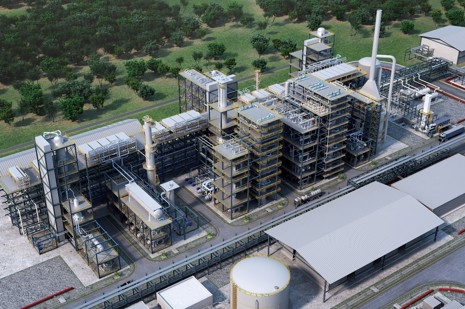
Pittsburgh International Airport (PIT) is challenging the aviation industry to reimagine what an airport can—and should be, demonstrating that airports are more than transportation hubs. They are creators of impact, portals for opportunity and ultimately, lifelines. Through its bold initiatives, PIT is transforming underutilized assets into powerful tools for energy innovation, regional economic impact and industry leadership.
Airports are critical response platforms, globally connected civic infrastructure and economic engines, supporting $4.1 trillion in global economic activity. They provide transport of life-saving medication and organs and essential services in crises. But recent events—grid failures and growing climate risk–raise questions about how we keep them resilient, reliable and future-ready.
Recently, PIT announced plans for the first on-airport SAF refinery that could produce up to 120 million gallons of ASTM-certified SAF annually through Alcohol-to-Jet technology. PIT is leveraging its robust infrastructure and resources – available land, proximity to feedstocks and oversized fuel storage tanks– to produce SAF, for on-site use and export to supply Northeast and Mid-Atlantic airports via pipeline, rail and barge. Construction is expected to begin in early 2026 with fuel distribution as early as 2028.
This announcement builds on PIT’s trailblazing achievement of becoming the first major airport in the U.S. to operate independently from the main grid. In 2021, PIT launched its 23-megawatt microgrid, powered by five natural gas turbines and over 9,000 solar panels. It saves the airport more than $1.5 million in electricity costs annually and has allowed for large scale electrical resiliency. When a recent regional power outage crippled nearby communities, PIT remained fully operational, showcasing the incredible value of energy independence. The microgrid is also capable of integrating clean energy inputs like hydrogen.
These investments are essential for moving the needle towards the industry’s goal of net-zero by 2050. IATA Director General Willie Walsh emphasized the urgency of accelerating progress at the recent Annual General Meeting in New Delhi, insisting the industry ramp up production and efficiency. The aviation sector represents one of the hardest to abate industries in reducing greenhouse gas emissions. PIT is showing the way to a cleaner energy fuel path, working with our airline partners.
PIT introduced these initiatives while undergoing a multi-year, $1.7 billion new terminal program, set to open this fall. The terminal was built sustainably, using 90 percent local labor and materials and is tracking towards LEED Gold certification. It’s an economic powerhouse, generating $2.5 billion in economic activity and over 14,000 jobs using no local tax dollars.
While not every airport has the resources to replicate PIT’s model, the takeaway is clear: airports must take ownership of their energy security and diversity. With no one universal solution, they should assess what makes sense for their circumstances–whether it’s solar power, natural gas pipelines or other innovative options. PIT’s initiatives are proof that airports can serve their passengers and regions while building a prosperous and stable future for generations to come.
To stay updated on PIT’s initiatives, subscribe to its award-winning news service, Blue Sky News.
Author: Christina Cassotis, Chief Executive Officer
*Find out more about Pittsburgh International Airport's engagement in the IATA's Strategic Partnerships Program on the partners directory.